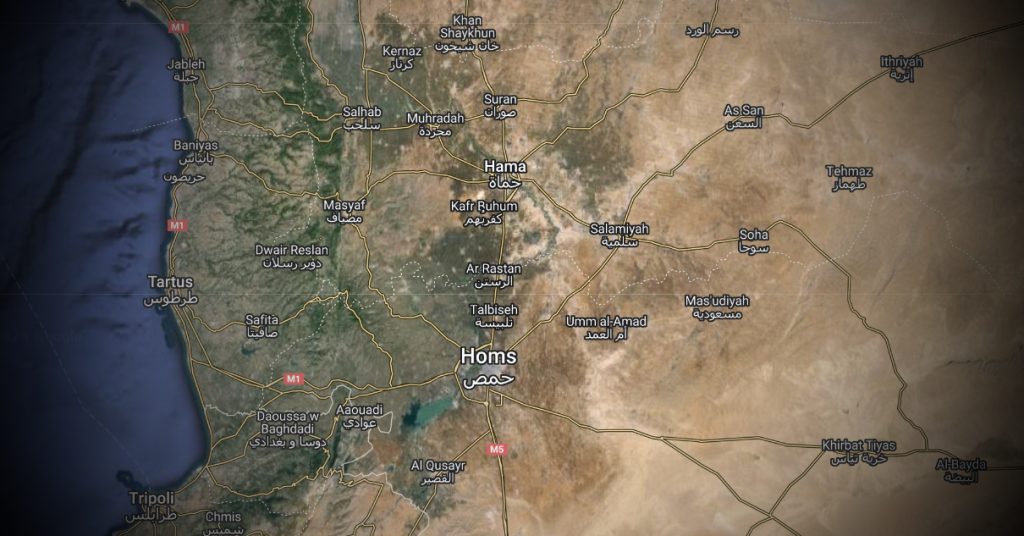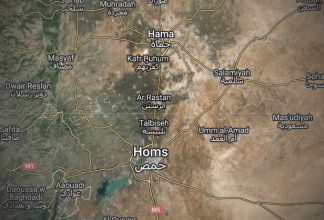Report 6: Hearing of Expert Witnesses

The previous report covered the hearing of the defendant. This report will summarize the testimonies of expert witnesses that testified about their knowledge of the typical structure of national armies. Expert witnesses Philip Dygeus and Ingemar Bengtsson testified before the court on Friday 3 May while expert witness Per Skoglund testified on 6 May. All witnesses have backgrounds in the Swedish military. An Arabic version of the report can be found here.
Philip Dygeus
Qualifications as an Expert Witness
Following a declaration of oath, the witness was queried about his qualifications as an expert in the trial whereupon Dygeus, a legal professional specializing in international criminal law, provided details of his extensive legal experience in international courts such as the International Criminal Tribunal for former Yugolsavia (ICTY) and the International Criminal Court (ICC). Additionally, he disclosed his military education at the Marine War University (Marinens krigshögskola), his service as an officer in the Swedish defense forces on international missions as well as his service as an officer in NATO on several occasions. When asked about his familiarity with the Syrian army, Dygeus attested to his lack of direct experience with it.
The structure of a military organisation
To establish the witness’s credibility as an expert in the trial despite lacking direct experience with the Syrian army, he was presented with a schematic illustrating the structure of the Syrian army. Dygeus noted parallels with structures of armies with which he was familiar and asserted that the depicted structure, except for minor deviations, represented a conventional method of military organisation.
Regarding specific components of an army, Dygeus delineated Corps and Division levels as levels typically dedicated to coordination and the building of operational capacity while lower levels have operational functions. Functional units, including an armament unit, were described as supporting units for the division management, typically stationed at the division headquarters. When the prosecution prompted the witness for clarification on the universality of this structure, in order to avoid him drawing conclusions about the Syrian context, he affirmed its applicability to most armies. However, he highlighted a notable distinction between democratic and authoritarian state armies, particularly regarding the inclusion of a political unit. He emphasized that such a unit was present in the armies of certain authoritarian states, such as the former Yugoslavian military. Additionally, authoritarian state armies were typically characterized by more of a top-down command structure, without any possibility to alter orders, he stated.
Despite the absence of an explicit armament unit within the Swedish military, which was the witness’s area of expertise, he contended that such a unit mirrored the armament function integrated within the Swedish military’s “logistics unit.” He claimed that, by drawing from his military background, he could assert the importance of this unit within the army. When confronted with a hypothetical scenario involving the absence of functional units, including an armament unit, Dygeus unequivocally asserted the impossibility of the army functioning under such circumstance.
Communication and Information Flows
Furthermore, Dygeus was enquired about the typical communication conduits and the chain of command in an army. In response, he underscored the importance of input from specialized units for commanders’ decision-making. He pointed out that it was important for an army’s the division management to have forums for regular updates from each special unit in order to make informed decisions. All positions typically communicate with their respective counterpart on another level in the hierarchy. The communication conduits thereby form a sort of pipeline in which information flows between different hierarchal levels.
Concerning the armament unit, Dygeus clarified that requests for replenishment of ammunition (see report 5) are typically authorized by the head of a division, necessitating information exchange through the pipeline. In response to the prosecution’s questions about the downward information flow, from the division management to the functional units, Dygeus argued that all units involved in decision-making need comprehensive situational awareness and information about issues that could affect the division. He stressed that the frequency of information exchange depended on the need of information and the intensity of the armed conflict.
When discussing a potential refusal of an order, Dygeus expressed his belief that individuals always retain the ability to make choices, distinguishing humans from animals. In his capacity as an international lawyer, he emphasized that following orders from a commander does not absolve a person from individual criminal responsibility in cases involving genocide and crimes against humanity. He stressed that war crimes are assessed on a case-by-case basis and suggested that it might be easier for military officers within functional units to refuse orders from a commander compared to soldiers in field, who face the risk of direct execution.
Hearing by the Defense Counsel
During the hearing of the witness by the defense counsel, the focus was on differences between the Swedish and the Syrian army. The counsel underscored Dygeus’ lack of experience with the Syrian army and subsequently indicated his lack of knowledge of the Syrian military structure.
The defense counsel questioned Dygeus regarding potential deviations from the hierarchal information flow pipeline. Drawing attention to the Syrian context, characterized by a significant portion of defectors from the army on the enemy side, she suggested a crisis of confidence within the army as a plausible circumstance. Furthermore, she noted the impact of different religious affiliations on the hierarchy in the army and the information flow. While Dygeus acknowledged the need for further information to validate such assumptions, he concurred that a crisis of confidence and religious hierarchy within the army could hypothetically disrupt the information flow.
Ingemar Bengtsson
Ingemar Bengtsson was similar to Dygeus, initially questioned about his role as an expert witness. Bengtsson emphasized his expertise in military leadership and command structures, drawing on his extensive military background and previous tenure as a prefect at the Swedish Defense University. He clarified that his knowledge encompassed a broad understanding of military structures in general and admitted to lacking direct experience with the Syrian army.
When presented with a military structure sketch of the Syrian army, Bengtsson, as Dygeus, acknowledged his familiarity with it. He noted minor discrepancies between this structure and the Swedish system, which he described as a “Western model”. Specifically, he highlighted the absence of an armament unit and a political unit in the Swedish army. Bengtsson concurred with Dygeus in asserting that the armament unit serves as a supportive function to division management. He further argued that each functional unit’s highest representative should be co-located with the division management, emphasizing that the head of each functional unit acts as the division’s foremost authority in their respective expertise, working to advance the division’s objectives.
When discussing information flows, Bengtsson pointed out that data concerning ammunition usage in the field was likely routinely transmitted to the head of the armament unit. He explained that reports on ammunition consumption were probably sent from the brigade to the armament unit’s leader on a regular basis. He acknowledged that for the armament unit to fulfill its role effectively, it must consider the quantity of ammunition used to predict future needs. Additionally, Bengtsson noted that the decision-making process at the division level relied heavily on the expertise provided by functional units. He thereby established the same pipeline-structure of information flows as Dygeus.
Per Skoglund
With a background as a teacher at the Swedish Defense University for seven years and prior military experience, expert witness Per Skoglund provided an overview of military structures during his hearing in court. He outlined the hierarchical levels of a military organisation, emphasizing similarities across nations but acknowledging variations in organisational specifics in different nations. He discussed the role and placement of units, noting potential differences between countries such as Syria and Sweden.
He explained that the cooperation between Syria and Russia has led to a Russian influence in the Syrian military structure, creating a more command-driven structure. Regarding decision-making processes, the witness described a command-driven system where directives from higher authorities are strictly adhered to by division and brigade commanders, allowing minimal scope for deviation. He highlighted the importance of information flow within the hierarchy, particularly in command-driven structures where mutual reporting aids informed decision-making.
Under cross-examination, the witness affirmed centralized control of the Syrian army from Damascus and underscored adherence to directives and orders within the command structure. He clarified that the significance of the armament unit may vary between armies in different countries. He further emphasized the imperative of teaching military ethics and adherence to international law, emphasizing the duty to refuse orders conflicting with legal standards.
Next report
The next report will summarize the testimonies of six witnesses heard on 3, 7 and 8 May.
